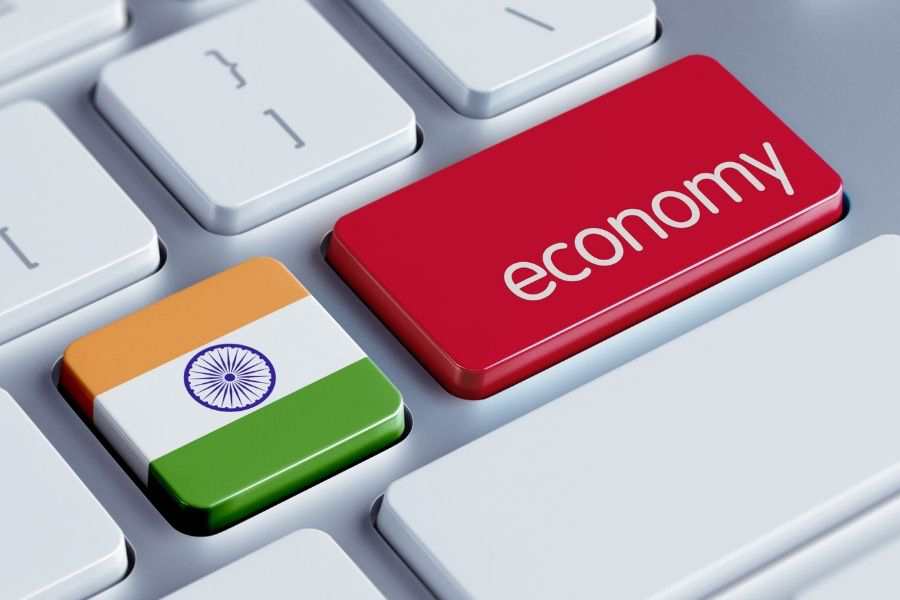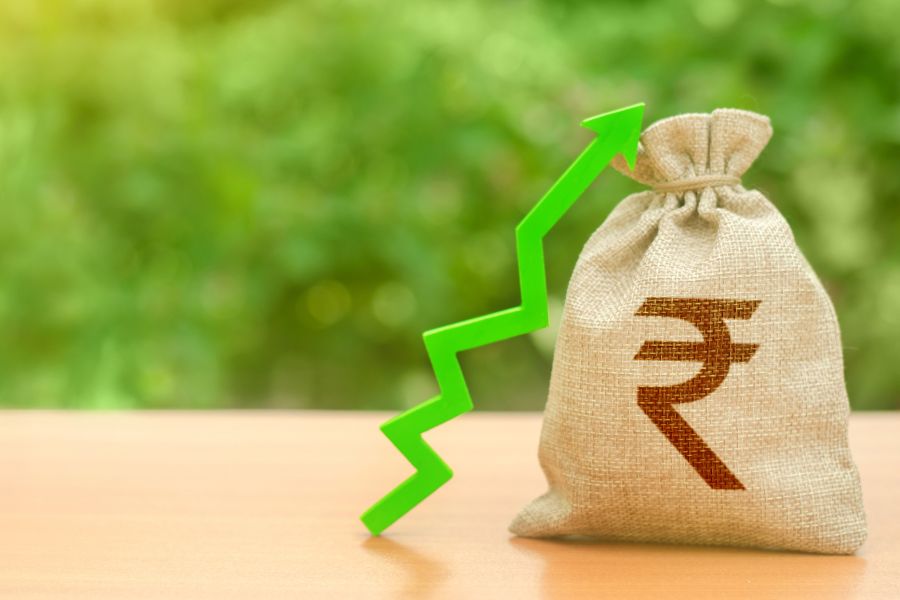Post-COVID, the Indian economy has to make smart choices
Prof. Nilabja Ghosh asserts that large scale computerization and mechanization, which have accelerated due to COVID-19, will inevitably reduce labour intensity of production techniques that will not be easy for a populous economy. To encounter this trade-off among health safety, competitive advantage, employment, efficient choices will be important as much as governance, welfare and analysis of risk and return.

IBT: Despite the surge in cases, India’s merchandise exports have shown robust growth in April’ 2021. What are the expectations for the sustainability of this growth?
Prof Nilabja Ghosh: The first wave of COVID-19 was a crashing onslaught, partly for the novelty of the deadly disease, but mostly for the strong precautionary measures taken in terms of national lockdown. As the lockdown brought down infection rates, the lockdown itself was eased in a phased manner for the economy to pick up its functioning. Not surprisingly, the economy began to reflect all the demand and zest that were pent up across the world.
Market confidence in India revived, translating in rising production of commodities and services that include transportation and associated logistics. Spatial confinement of the affliction had let agriculture in rural India operate normally last year and respond to economic and weather stimuli in the usual ways. Exports therefore improved with 20 million tonnes of cereals defying ‘COVID blues’ and overall, the growth continued into the next fiscal 2021-22 as merchandise exports. This is especially in commodities where India has a special advantage.
Exports depend on demand bouncing back in foreign shores that remain vibrant on the heels of the success of western countries in controlling COVID-19 as of now. Unfortunately, supply response from India is likely to be hit, owing to the lockdown in states and the justifiable public anxiety about leaving home. While the robust growth of merchandise exports itself was a shock effect in the aftermath of the first wave and would have evened out over time, the follow-up scene of a more deadly second wave affecting lives of entrepreneurs, supervisors and labourers with bereavement, sickness and fear is likely to hinder both production and logistics to generate the supply that would make of the best of the high global demand. For that to happen, safer times will have to be awaited.
IBT: What sectors are showing/expected to show resilience during the second wave of COVID-19? Why? Conversely, which sectors are in urgent need of support?
Prof Nilabja Ghosh: The way the 2nd wave has panned out, it is not easy to be assured of resilience of any sector in particular. Agriculture and many rural activities that were insulated in the first wave may not be able to escape fully this time around with uncountable deaths and illness incidences becoming clear in villages. The lockdown in 2020, despite the unfortunate and perhaps unavoidable treatment of migrant workers, had certainly served in controlling the spread of infection into many far-flung areas and the interiors of India and even contained the disease within the cities.
Only with limited conviction, can one claim that sectors and industries that have become relatively aligned with digital methodologies will largely be spared of the onslaught. Services that can support ‘work from home’ offices will operate smoothly and in fact more efficiently, blessed by time and cost-saving on commutation.
However, as a whole, hardly any sector is wholly automated or computerized in India till now. Digitally enabled selection, ordering and payments made e-commerce highly active in the previous year but physical interfaces linger in markets and supply chains are not performing as efficiently as the last phase leading to shortages. Modernization of technology has transformed finance, including banking and insurance worldwide but remains incomplete in India. In villages, small towns and across the digital literacy divides, finance can hardly operate on a distant mode, not escaping even retail banking on local premises.
While very few sectors will fully escape the fury of COVID-19 wave either physically or economically, depending on the risk appetites and economic desperations of the workers, some sectors are too basic for their production of essential goods not to deserve special attention. Law enforcement, defence and medical COVID-19 care are recognized for their primacy. Non-COVID health monitoring, treatment and the care, care demands of the aged, sick, the infants, orphans and psychologically impaired or victims affected by the situation too remain to be kept in focus in a welfare state.
Psychological well-being and social needs of growing young children as well as adolescents who are future citizens also are important. Education is devastatingly affected but nevertheless, outside the confines of conventional examinations and degrees, education and skill building must find new ways to endure.
A towering concern is food security. Primarily, it entails access to food of the hard-hit families suffering loss of employment. The subsidized PDS is not a full answer to this on account of the infection risks but door to door service of food supply and perhaps cooked food supply to sick families need to be organized and financed. Moreover, this time, with the rural sector being under attack, there is no security of total food supply in the economy in terms of production and supply chains. Furthermore, exports and storage need to be planned cautiously.
IBT: According to CMIE data, India’s employment rate fell to 36.79% in April’ 2021. How is rising unemployment going to impact the recovery and what can the government and industry do to address the issue?
Prof Nilabja Ghosh: Rising unemployment with or without growth is a source of inequality, distress, sickness, fall in human capital generation and even strife and crime. While, with an end to the horror in sight, the economy may limp back, but the people and the industries will be stamped with the memory, apprehension and safeguard that the COVID-19 leaves behind. One result will be a change in the culture of work (preference for work from home, computer based work).
Also, there will be a change in technology with inclination towards greater use of machine power, rather human power; not only at the level of manual work, but also greater use of artificial intelligence in jobs requiring decision making. The government will have to find ways of protecting large number of people from the deprivation of unemployment rather than the unemployment itself.
Alertness on skilling and technology and the supply, upgradation and renewal or training supply will help, but not eliminate poverty, for which direct support as money transfer may be needed towards the sections moving out voluntarily or by force from the job market. At this juncture, universal or large coverage basic income may require greater consideration. Further, even investment may suffer from risk aversion inflicted by COVID-19 business experiences and employment, as entrepreneurs can be encouraged not just by credit and loan restructuring that RBI allowed but also insurance, loan waiver solutions and safety inducing technology. Both government and resourceful industries together may contribute to build up a fund to meet the expenses.
IBT: Since rural areas are among the worst hit in the second wave, what extent of damage is possible for the agriculture sector? What support would be required by farmers?
Prof Nilabja Ghosh: Farm distress is a highly likely possibility in 2021. Fear of infection has affected farmers, traders and other operators. Production levels may be affected relative to the given weather conditions. Marketing of the realized production will be a concern. Agricultural marketing operates through mandis, many of which are shut this time. Even the open ones arouse understandable fear of crowding among traders.
Consumers avoid malls, supermarkets and wet markets, compromise on choices and rely on e-commerce, which in turn banks on delivery services of individuals who take the risk. The erratic prices, high in some cases leading to food inflation and dismally low in others due to low collection at farms, are results of chaotic shocks in both demand and supply. For small and subsistence farmers, food or broadly nutrition insecurity is a possibility.
While burgeoning stocks of food have been a problem for the government and the previous year has happily witnessed rice exports, government has to become more manipulative about food in coming times. Storage of excess grains beyond the buffer, possible need for imports, public purchases and safe distribution of food products, especially perishable ones like vegetables, cannot be ruled out, though the corporate sector may join as a partner in the social cause especially with safe technologies.
Farmers require food and economic safety-nets that can be channeled through MGNREGA, treated more as direct transfer of money than work fare that can cause crowding. The farm bill promoted direct purchases, computerized transactions and mechanized handling of products can embed some amount of resilience but the full effect cannot be expected as of now.
IBT: How are RBI’s measures to support small borrowers/MSMEs and the healthcare sector expected to support the economy?
Prof Nilabja Ghosh: RBI’s moves are highly critical and almost necessary in this situation for the sustainability of the economy. Despite many exemptions, the option of restructuring given in the previous phase and the current one allows positive business sentiments to be continued across the disruptive period as well as the welfare protection of purposeful entrepreneurs and workers of small businesses that have taken loans.
It has rightly considered loans to medical activities as priority and encouraged supply of essentials, shortage of which could be disastrous. Similarly allowing flexibility also to states to access federal resources is the need of the time, when health and many other important sectors are in the hands of resource starved states. The declarations of the RBI are the minimum that the financial economy deserves and will bear results, not just currently, but in the long run, when business and economy get back to their grooves.
IBT: What is your outlook for India’s recovery to its pre-pandemic size and level of growth? What are the steps that the government should take to revive economic activity and boost consumer sentiments?
Prof Nilabja Ghosh: The outlook depends on the trajectory of COVID-19, its possible mutation and a much feared third wave, all of which in turn depend on the extent to which the spread of infection is contained by the policies of government, not only in India, but also other countries. COVID-19 opened up at a time when India was already struggling to gain momentum in economic growth and usher many technological and administrative reforms.
The first phase, as it appears, turned the economic movement into a contraction with a growth rate of -8.0 % which was largely not surprising although some economists had shown greater optimism. The silver lining lay in the normal performance of agriculture and a small growth in Q3 and a rising of confidence for a high positive growth rate in the next fiscal on a low base.
With the nearly unexpected second phase proving deadlier than the previous one in terms of infection and fatality and its reach into the rural precincts and the north-east, it will be impractical to have high hopes on economics beyond keeping people safe, nourished, updated in knowledge, physically and psychologically healthy and ready for springing back to activity the moment the economy calls.
Vaccination, health care, information dissemination and some amount of monetary support among people of different ages and in urban, sub-urban and rural milieu will hold the key to this preparedness. Good governance, as demonstrated will to solve the COVID problem, social engagement of the private sector and wide sharing of information will help in building faith on the system required for renewed participation in the recovery.
Confidence, if any, needs to be based on a solid foundation of knowledge, medical research, data and candid truth rather than artificial methods of viral propagation and concocted economic ‘feel good’ factors. Failure of such confidence will be violently self-defeating. Encouraging production with economic incentives at the risk of infection will not prove to be a good strategy, until vaccination and rural health care is strengthened sufficiently.
IBT: The pandemic has accelerated a shift in consumer habits towards digital mediums. What role will technology resilience play in the post-pandemic period as a factor for global competitiveness and GDP growth? What can India do to emerge as a frontrunner in this paradigm?
Prof Nilabja Ghosh: Socio-physical movement paralysis induced by the pandemic produced a compulsion to shift to digital mediums for transactions and entertainments. Digital lags and reluctance compromised individuals in consumption, in health safety and also in the job market. Health care also joined the league in the time of crisis. India has been one of the top adopters of digital technology during this time according to a survey conducted by E&Y.
While digitalization was already an endeavor in process cutting across industries and sectors, the COVID and associated lockdowns enforced its acceleration. The experience also showed that much of the economy can roll out without physical interfaces, saving cost on fuel, energy and infrastructure too. In the unlucky but not totally avoidable event of other pandemics in future, products and services that rely more on digital than manual power will come out not only with advantage but as the only winners is apparent.
On its digital path, India has made considerable progress and special emphasis is laid by policy on the least privileged rural India for agricultural production and value addition with the help of digital platforms and e-market (e-NAM). India can exploit the dismal COVID situation as an opportunity to strengthen technology and skill in digital technology.
Yet computerization alone does not ensure safety, cost saving and efficiency for global competition so long as physical transaction in goods cannot transpire without human movements and presence. Technology of transportation, robotics and internet of things can aid mechanization of operations in agriculture and industry and in loading and handling in trade and construction to minimize human crowding. Data will be the biggest support for decision making and data itself has to be made more automated with computers, satellites, audio-visual recordings, drones, algorithms and models to manage farms, trade, transport, tourism and administration.
Large scale computerization and mechanization will inevitably reduce labour intensity of production techniques that will not be easy for a populous economy. To encounter this trade-off among health safety, competitive advantage, employment, efficient choices will be important as much as governance, welfare and analysis of risk and return.
Prof. Nilabja Ghosh is a Professor at Institute of Economic Growth. She has earlier served as a Lecturer (project) Indian Statistical Institute in Calcutta, Lecturer in Economics (permanent), Calcutta University, Consultant at NCAER and NIPFP in Delhi, Associate Professor (Leave vacancy) in IES unit, IEG.
Her research interests include Agriculture, Resources and Development, Supply responses, Fertilizer use and organic farming, Education, Gender, Globalization, Food marketing and processing, Econometric modeling, Forecasting of output, Measurement of inputs and output in agriculture. Views expressed are personal.













Leave a comment